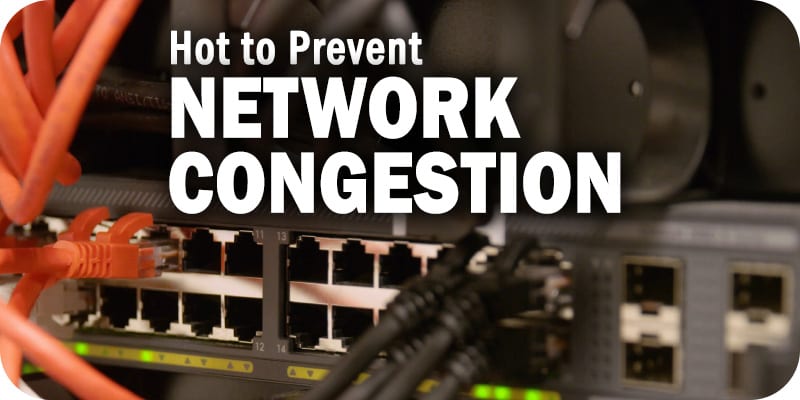4 Causes of Network Congestion – And How to Prevent Them


If your company is dealing with bad network congestion, look for these four common causes and take steps to correct them if they’re affecting your network.
Your enterprise’s network needs to operate quickly and efficiently to satisfy your customers. Nobody’s happy if your network isn’t performing at its peak ability. Network teams use network performance monitors (NPMs) to analyze how their network is behaving. An area of network performance that NPMs are equipped to deal with is network congestion.
Network congestion occurs when a network (or a portion of the network) or a network node is overloaded with data. Congestion can happen for a variety of reasons, but regardless of the cause, it can be a huge problem for companies. They annoy both customers and employees alike and reduce and enterprise’s productivity. However, an NPM can discover and alert you to any congestion or bottlenecks on your network. Below, we’ve listed 4 common causes of network congestion and how you can prevent them.
Outdated or non-compatible hardware
Every so often, your network team will have to upgrade network capacity and speeds in order to match your enterprise’s demands. If your team doesn’t upgrade its hardware along with it, you could be opening the door to bottlenecks. Whenever possible, your team should upgrade your switches, servers, routers, etc. to have the most optimal hardware layout.
This also extends to wire and cable connections between devices. Ethernet cables, for example, have different categories that determine their maximum data speed. If your Ethernet cables aren’t able to handle the data speeds your network requires, they can slow down your network tremendously.
Too many devices
Every network has a specific level of capacity that it’s able to handle. This capacity puts a limit on how much bandwidth and traffic your network can deal with before it begins to affect performance. (This is assuming that all the data is healthy and isn’t hurting performance itself.) If there are too many devices connected to the network, then the network might become overloaded with requests for data. Your NPM will inform you if there are more devices than your network is equipped to deal with.
Bandwidth hogs
A bandwidth hog is a device or user that, either accidentally or on purpose, consumes much more data than other devices. Depending on the device/user, the difference between average data usage and the hog’s usage can be minor or significant. Regardless, an NPM can tell you when a device is draining bandwidth above the expected level. Some NPMs allow you to monitor bandwidth usage in real-time, meaning you can detect when a bandwidth hog is using resources.
Poor network design and subnets
Sometimes, the congestion is the fault of how your network is designed. Your network layout needs to be optimized to ensure every part of your network is connected, but also to maximize performance across every area of coverage. When you divide your network into subnets, it should be done to accommodate for the devices you know will be on the network. That is, subnets should be designed around devices permanently connected to the network. If there’s an area where you know a lot of devices will be demanding data, that subnet should be sized appropriately.
Our Network Monitoring Buyer’s Guide contains profiles on the top network performance monitor vendors, as well as questions you should ask providers and yourself before buying.
Check us out on Twitter for the latest in NetMon news and developments!





















